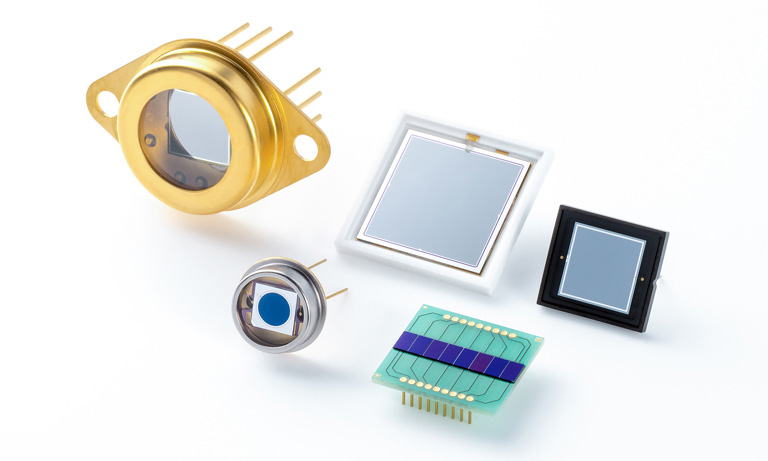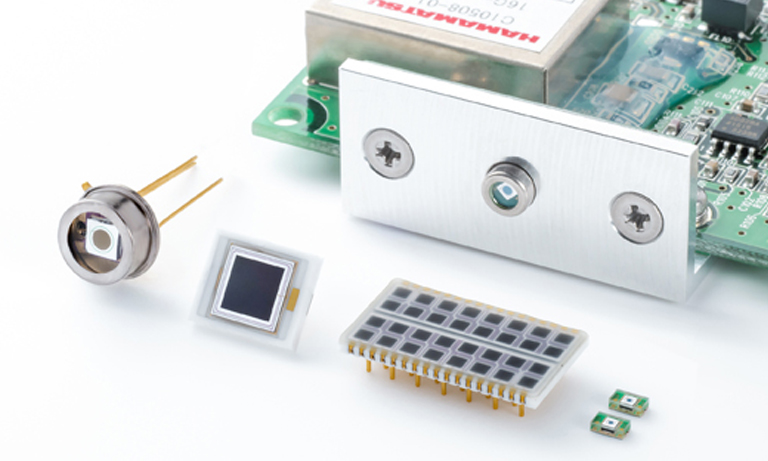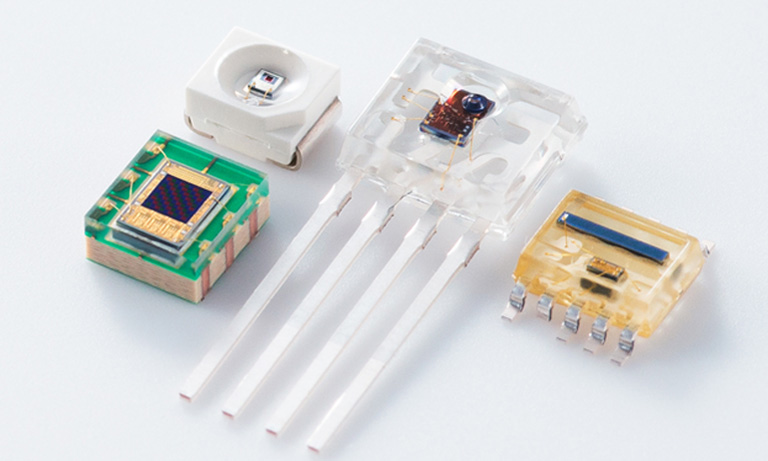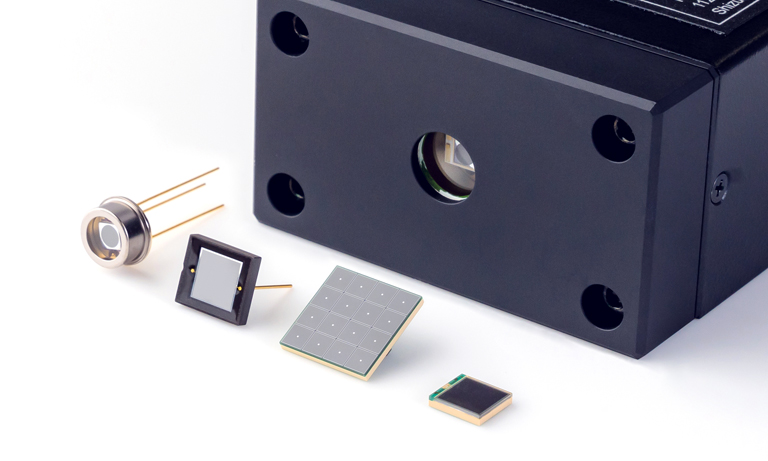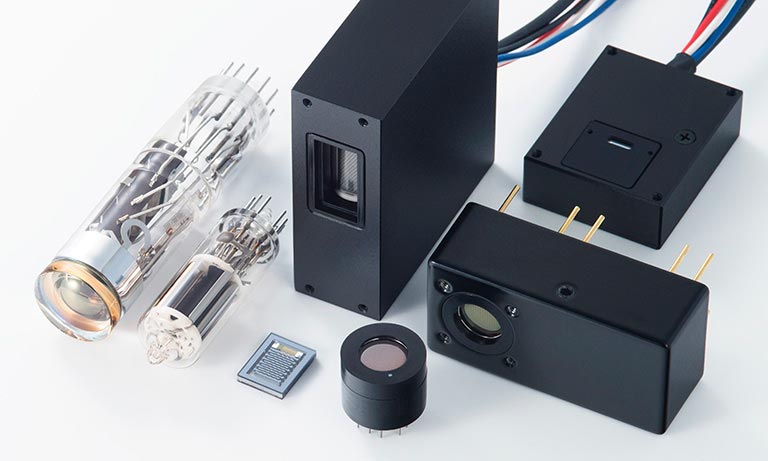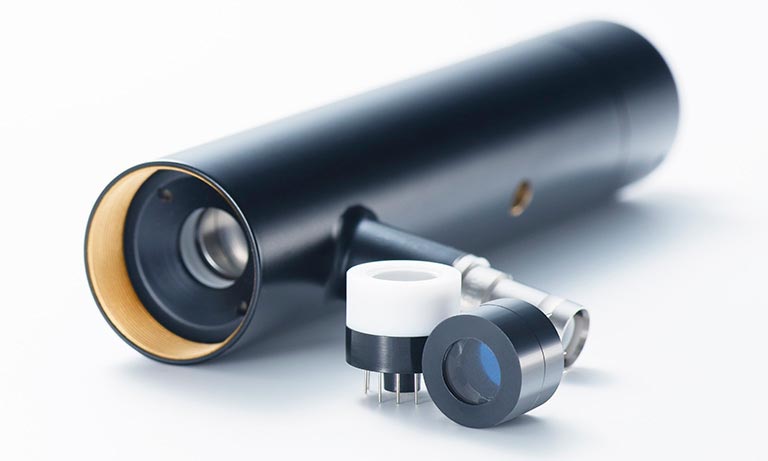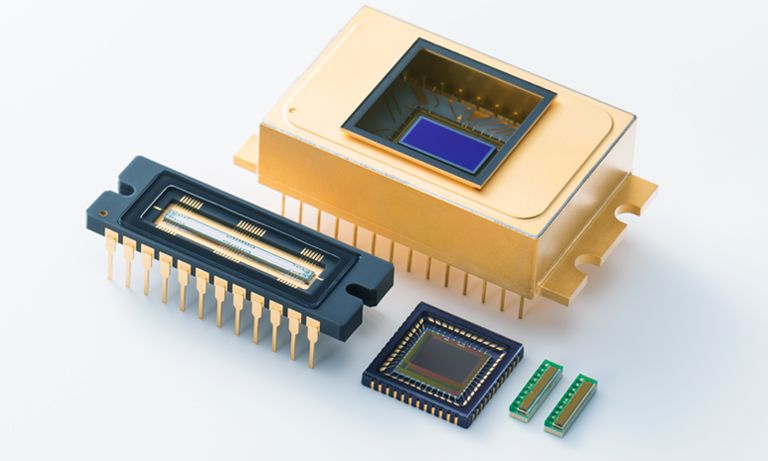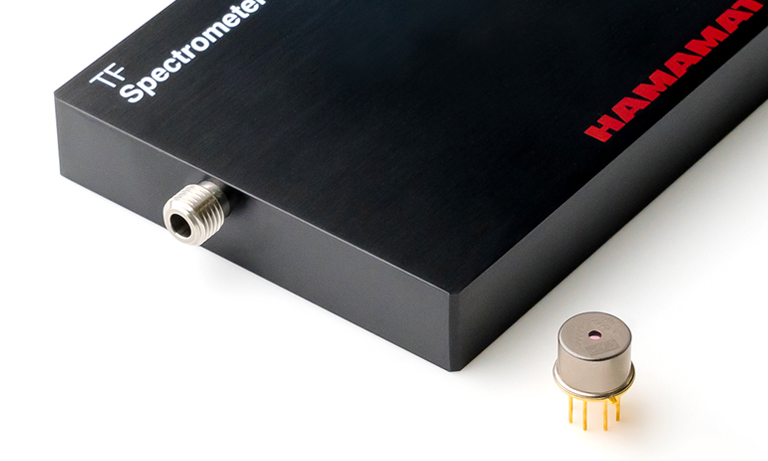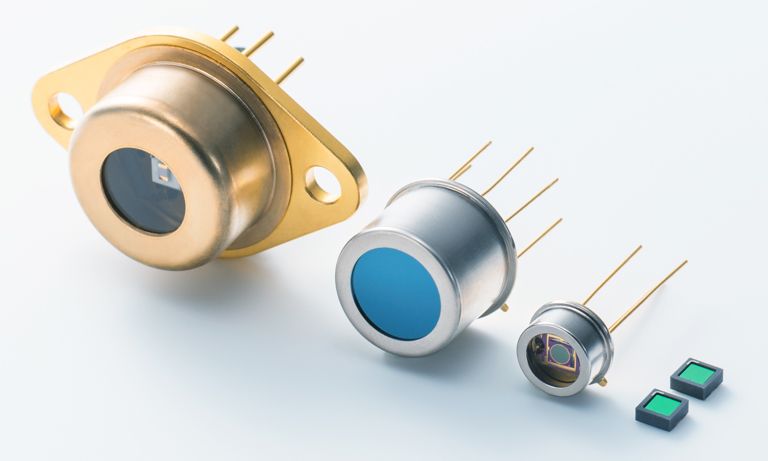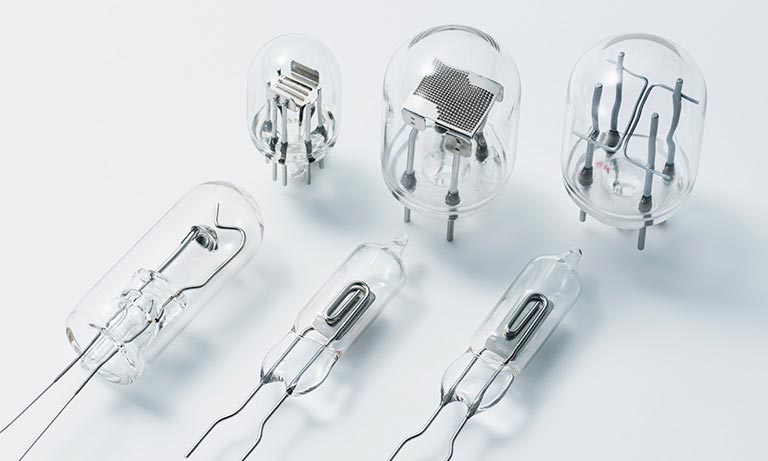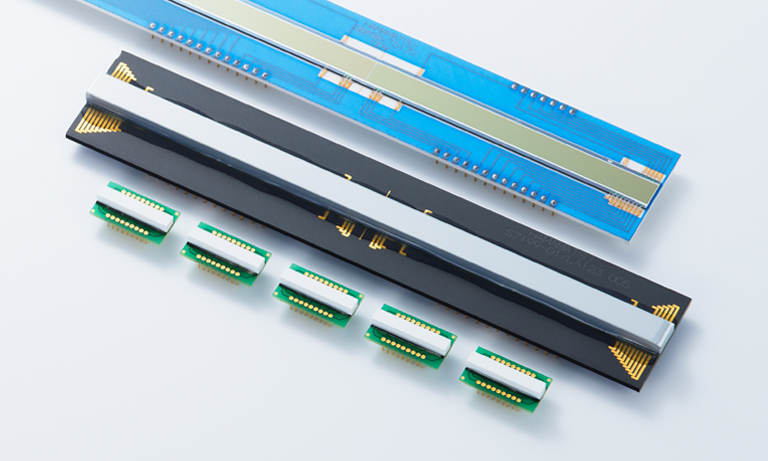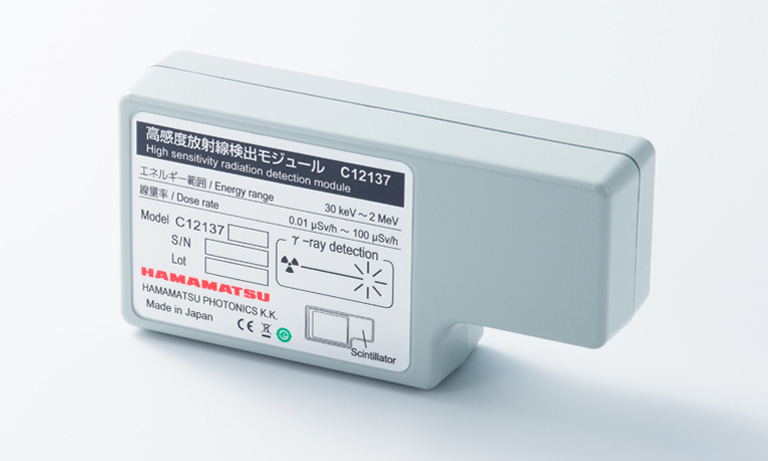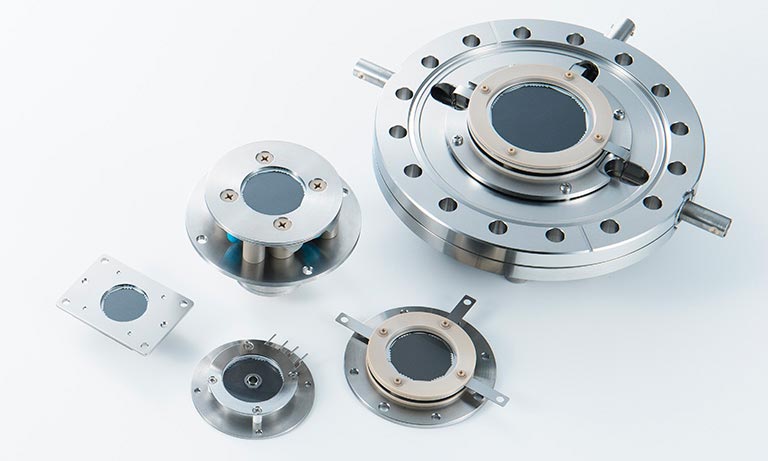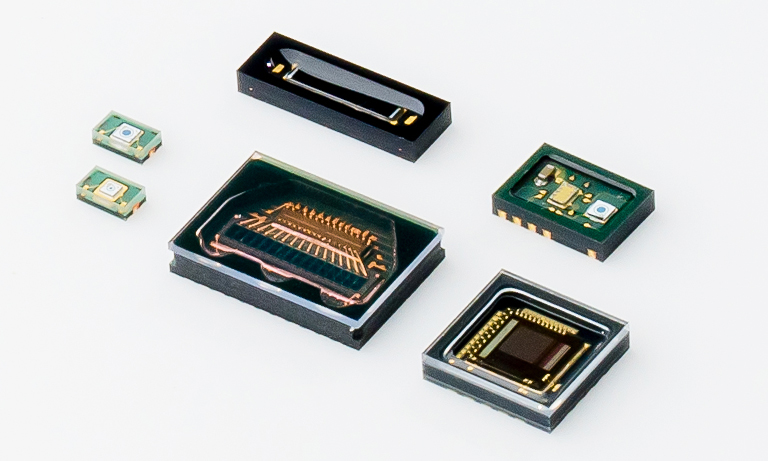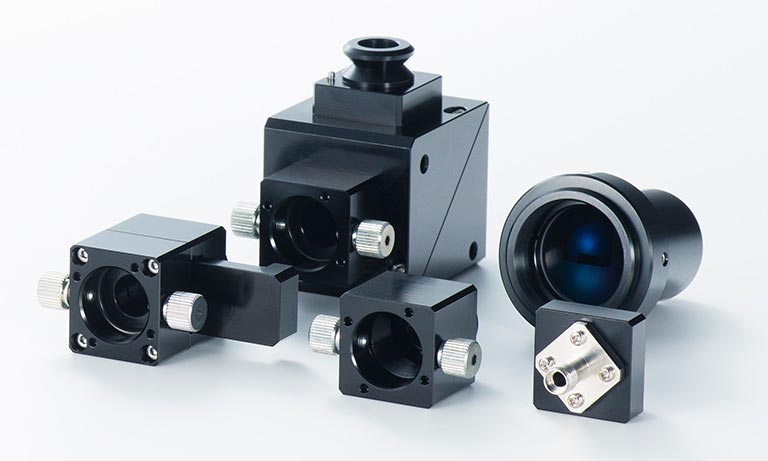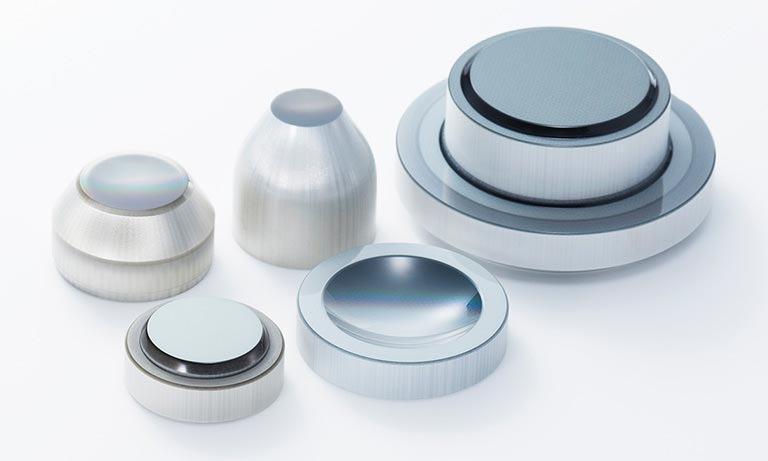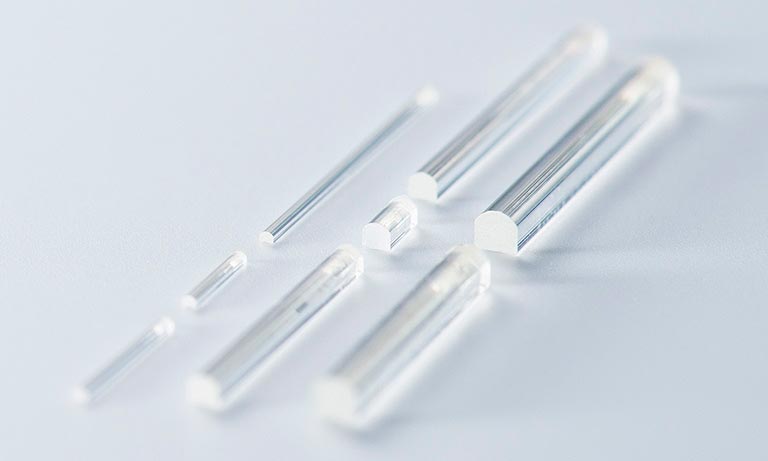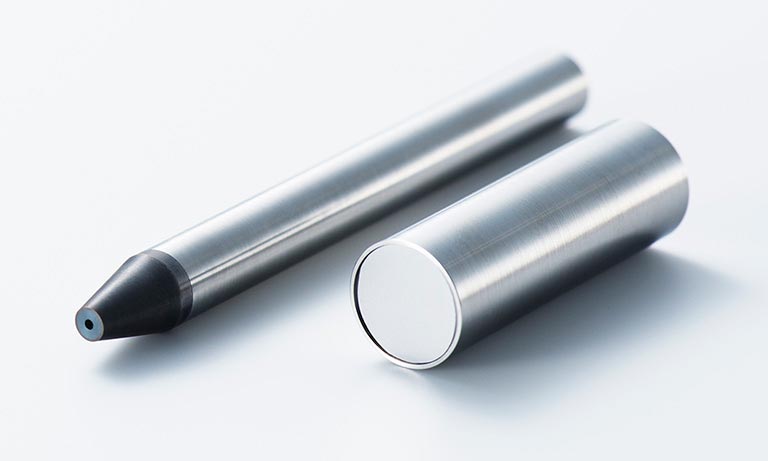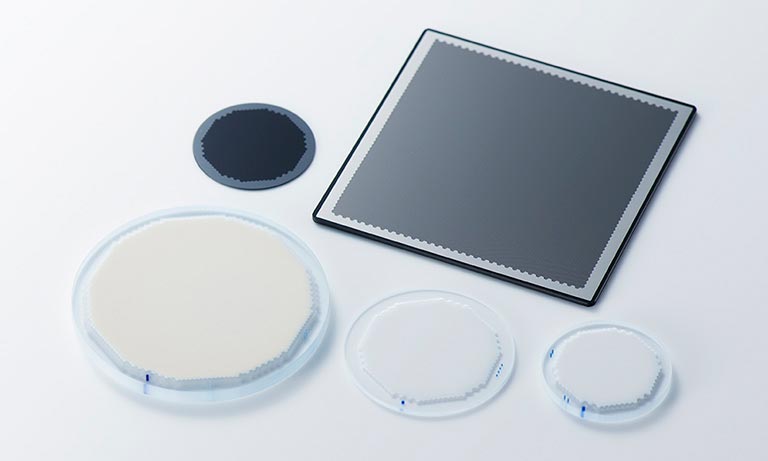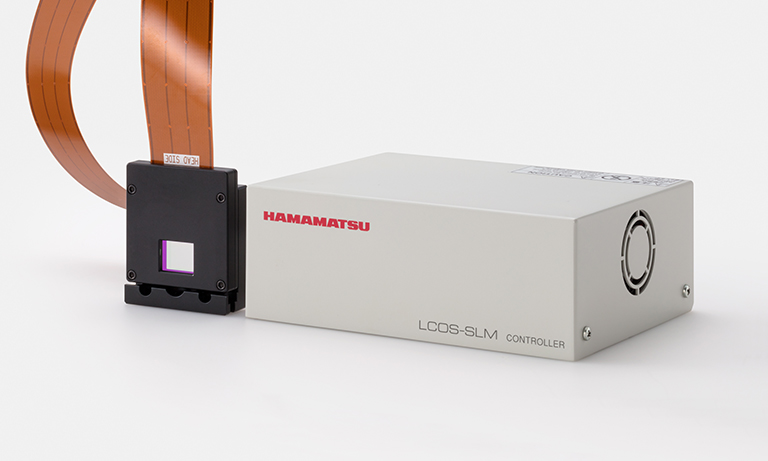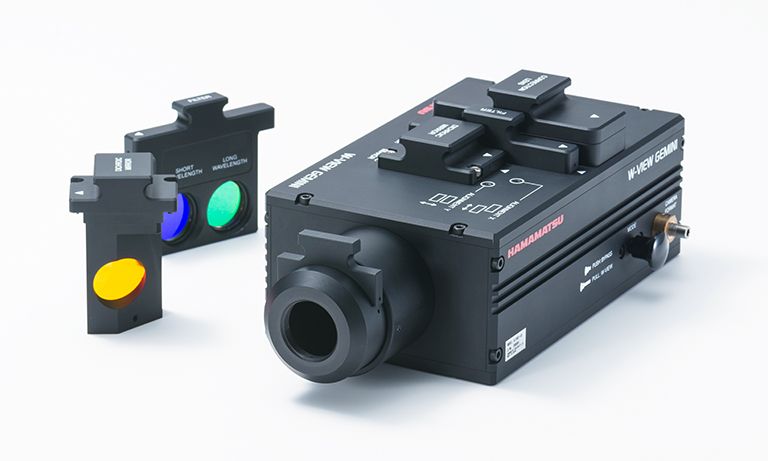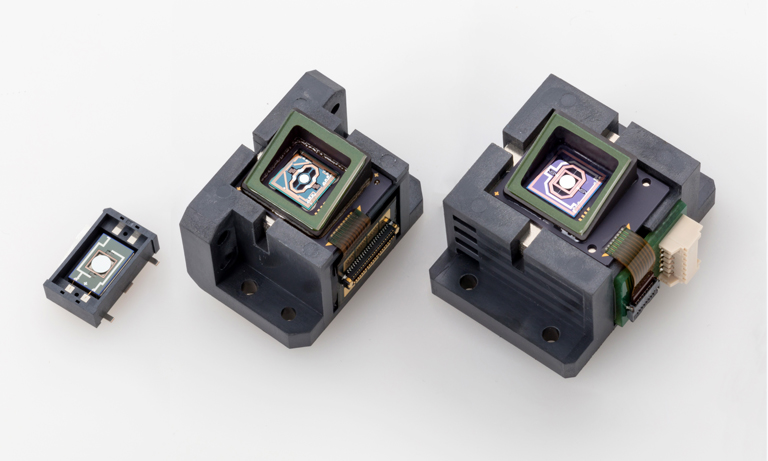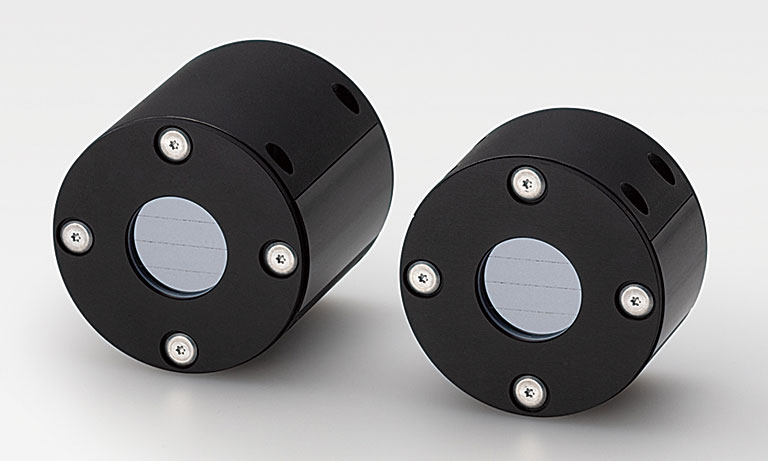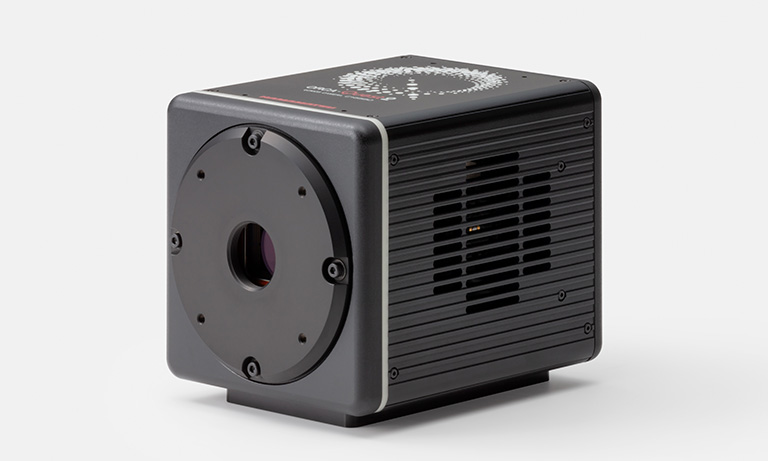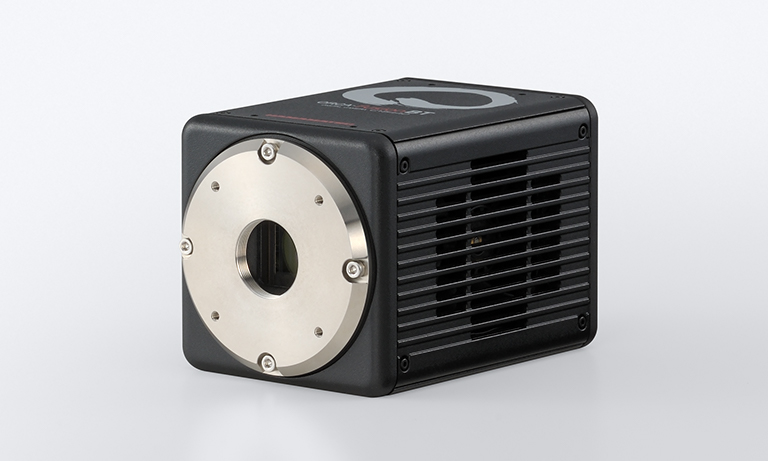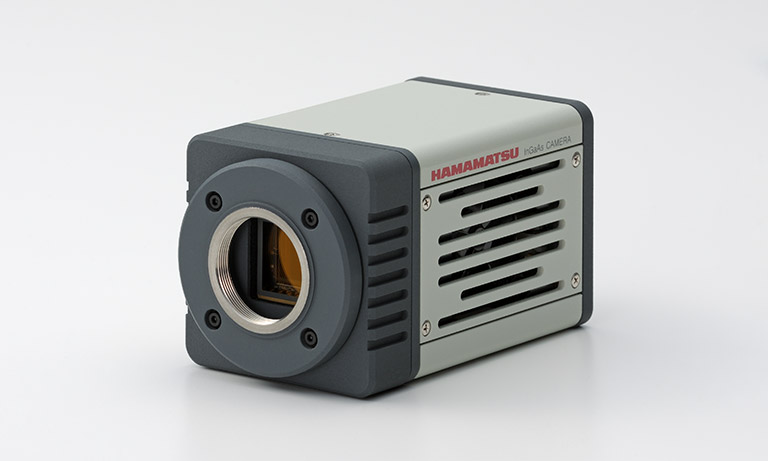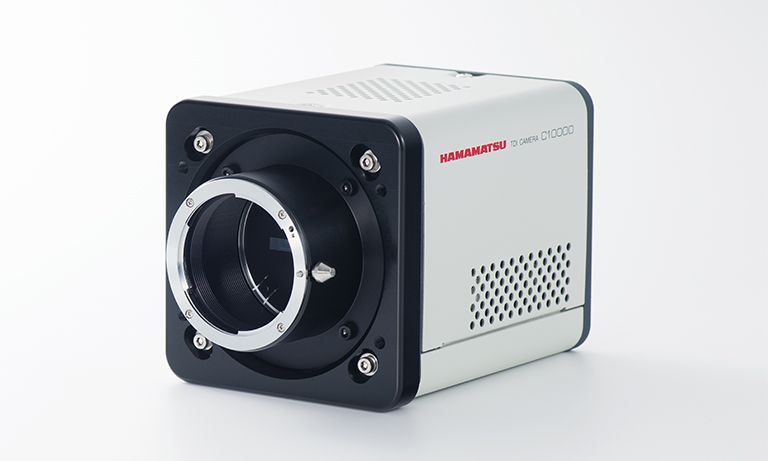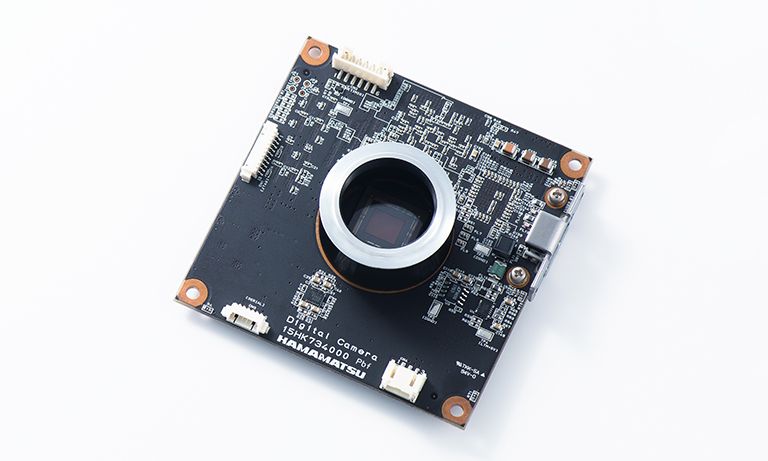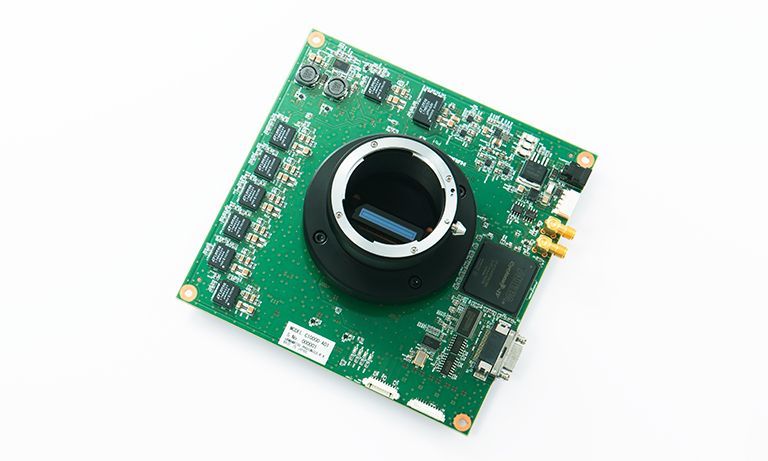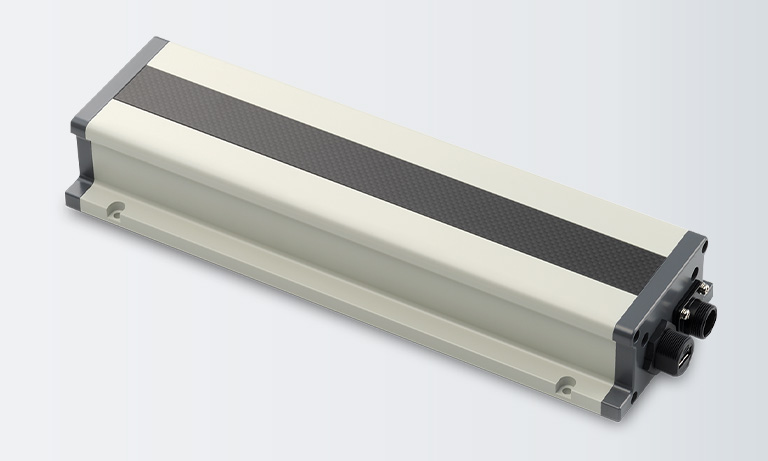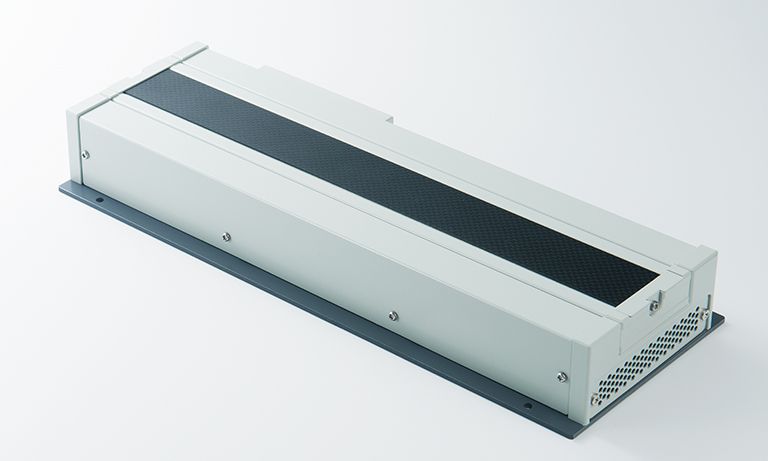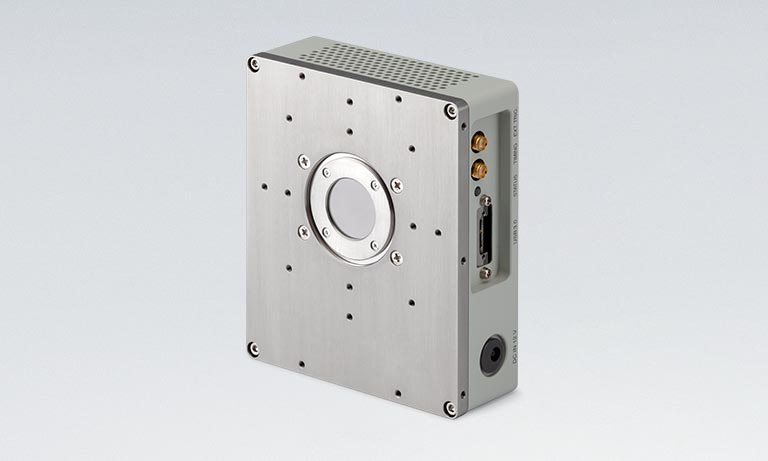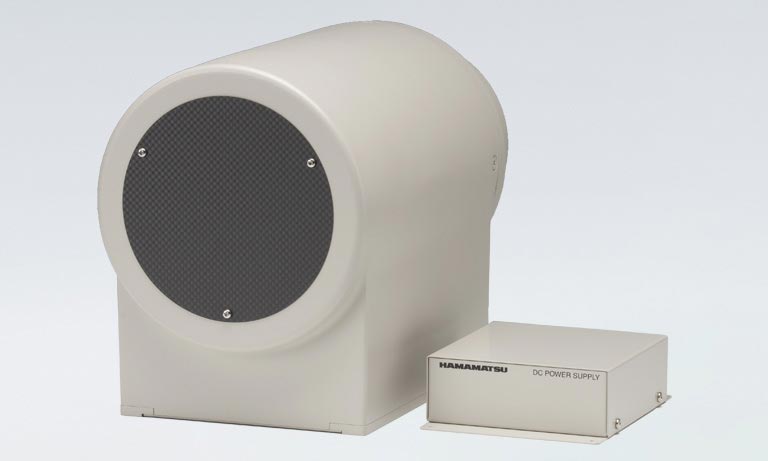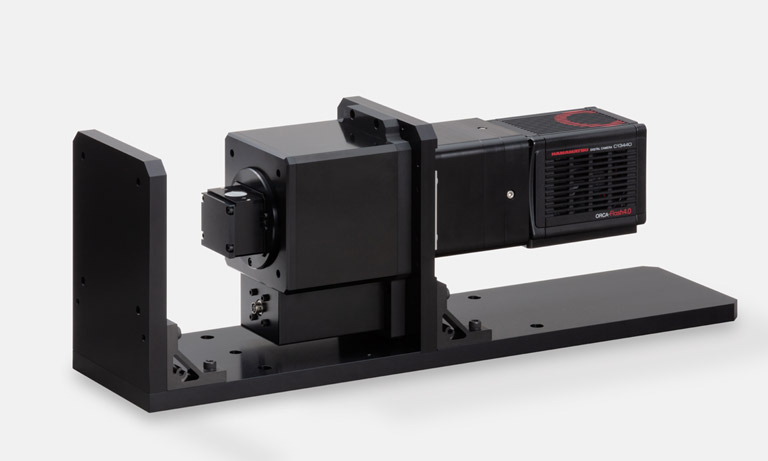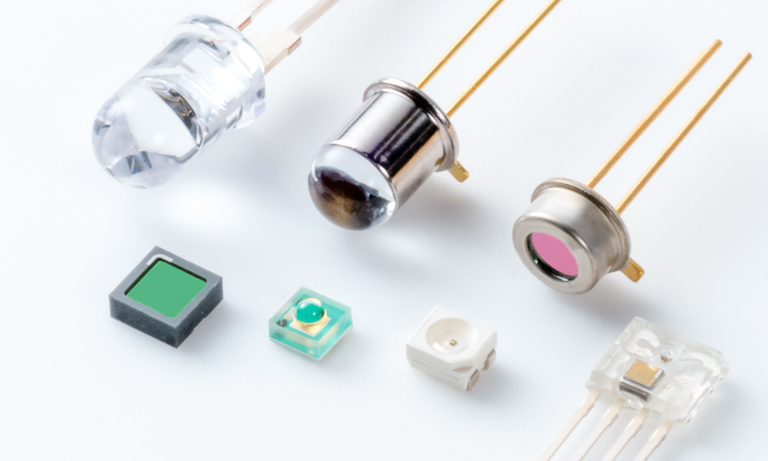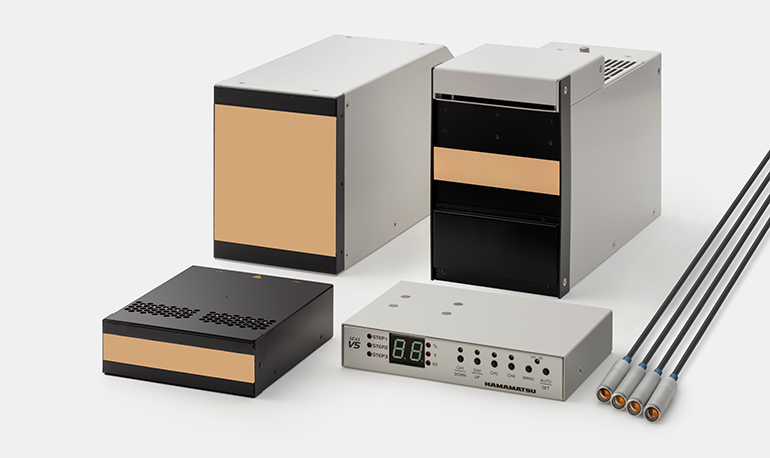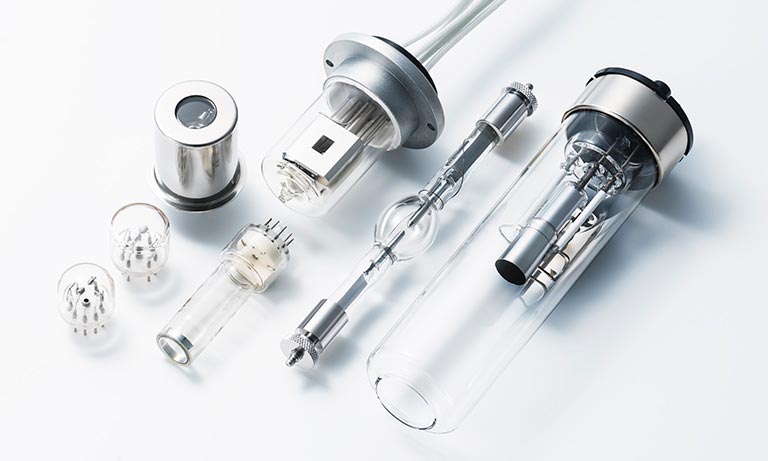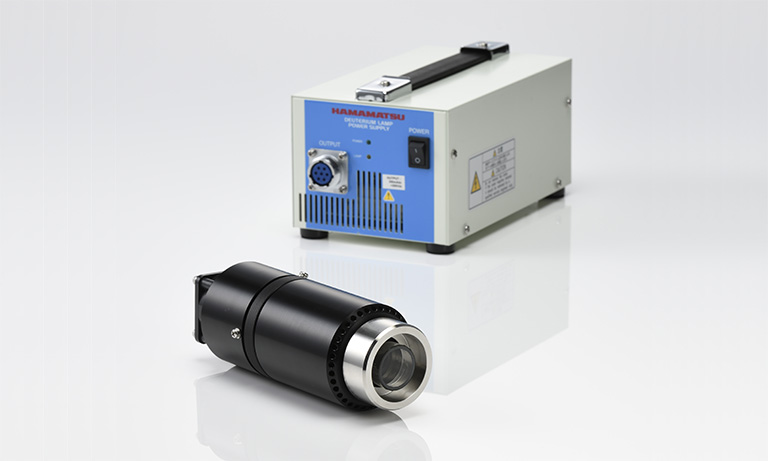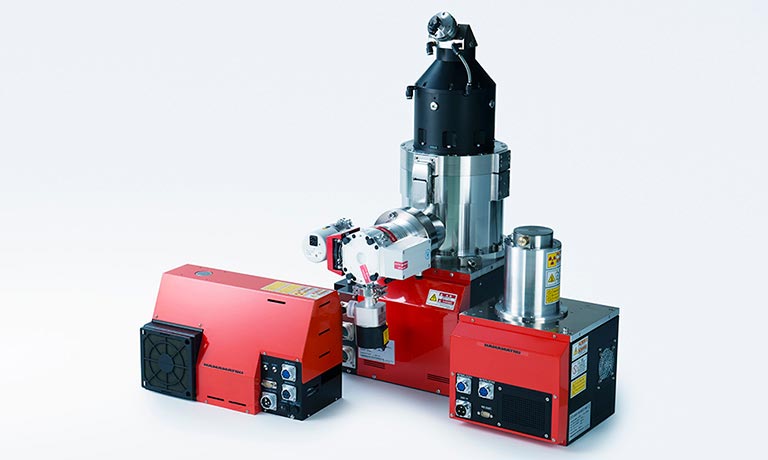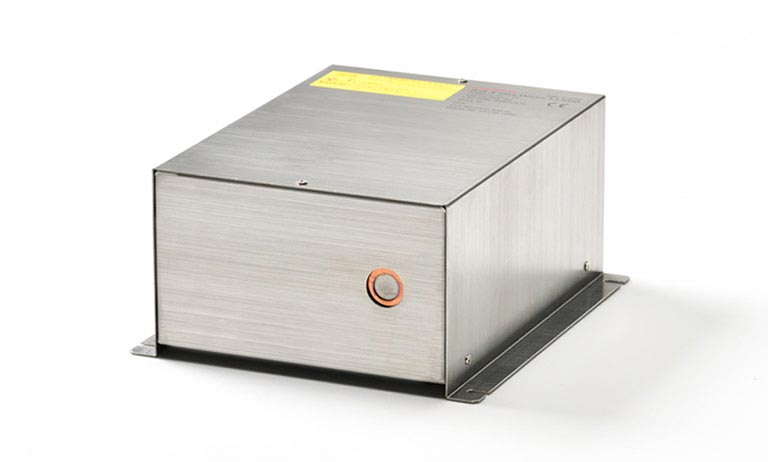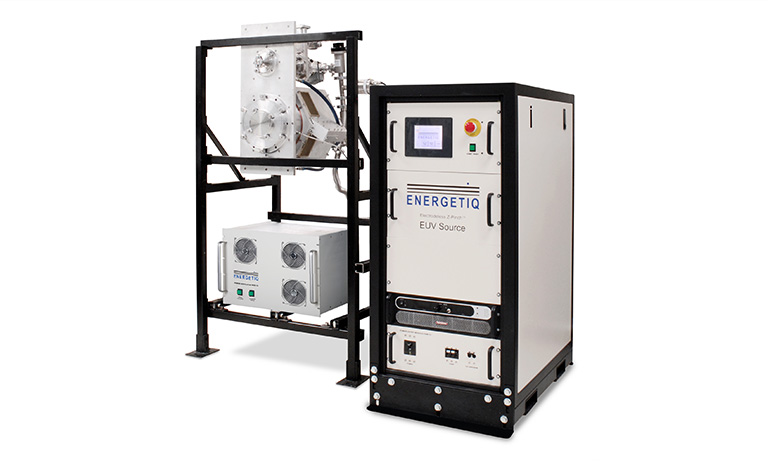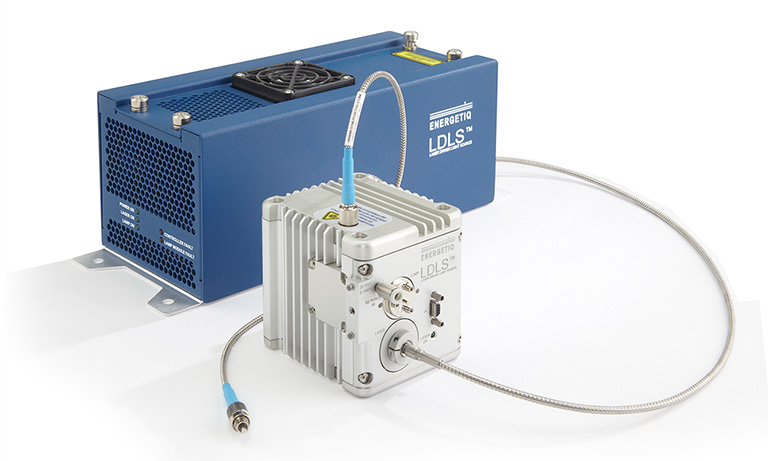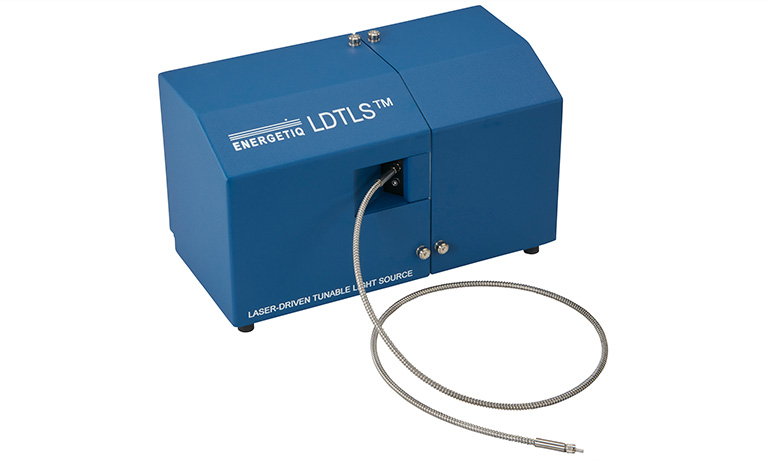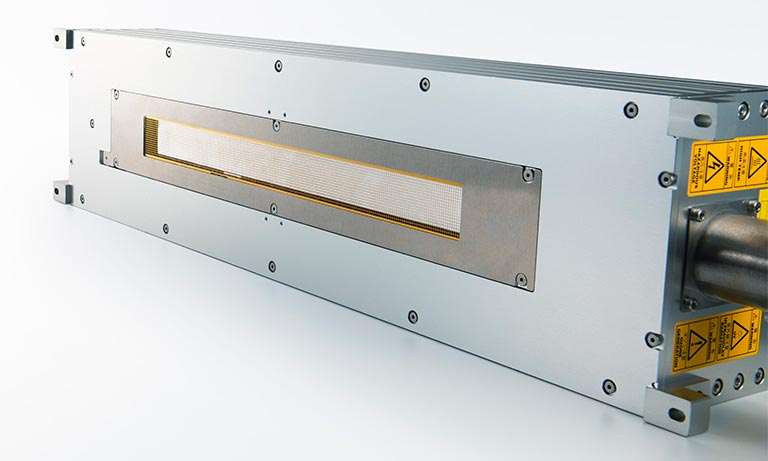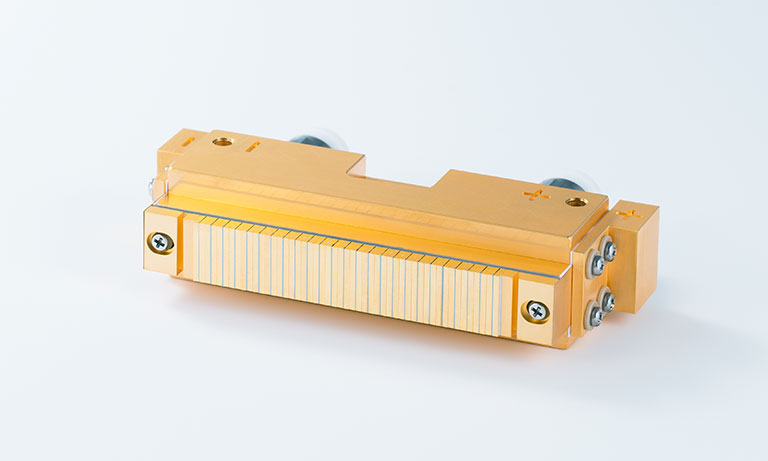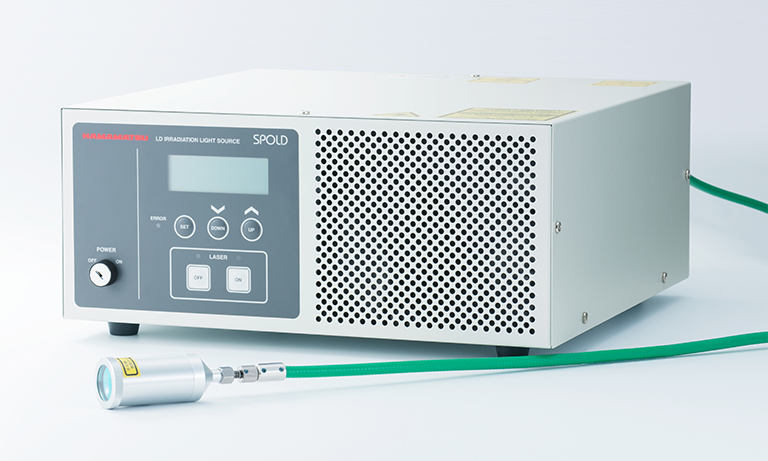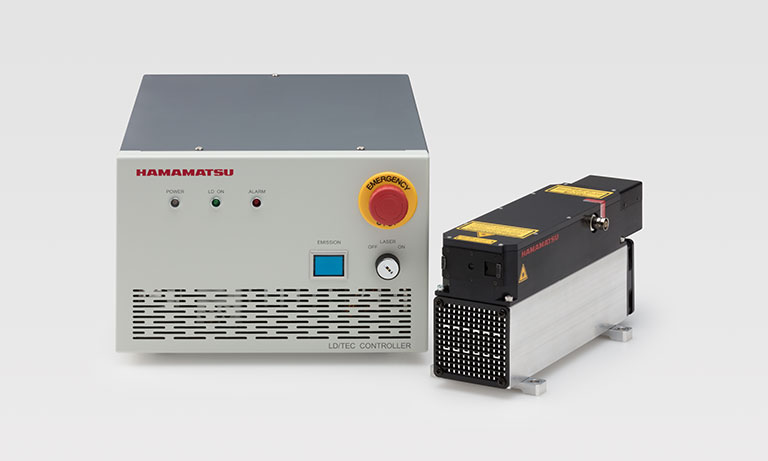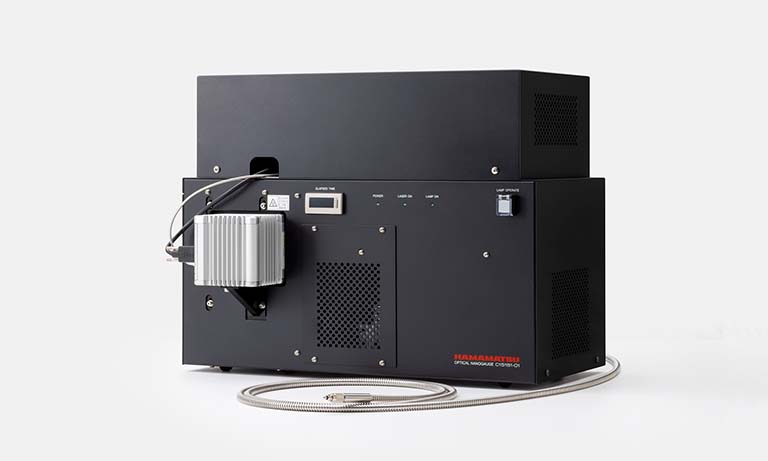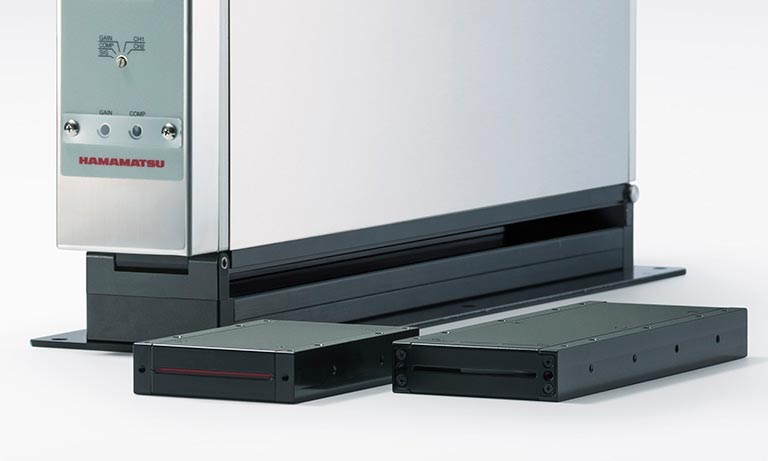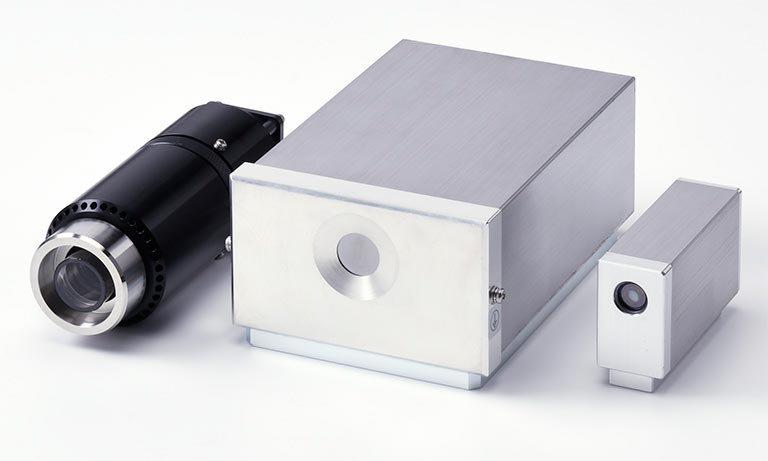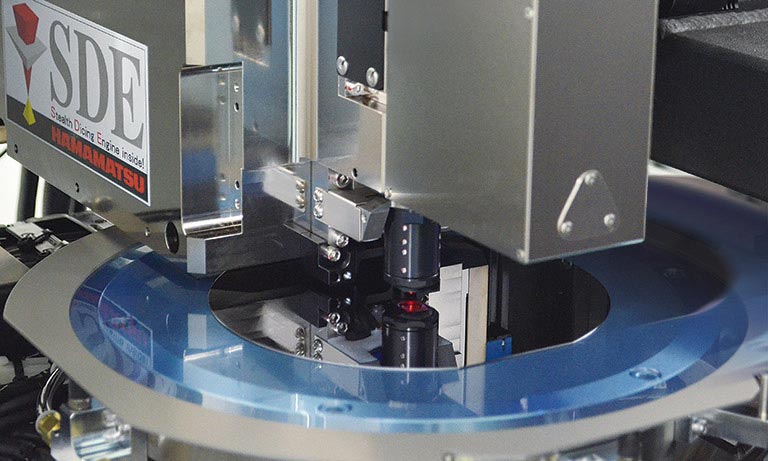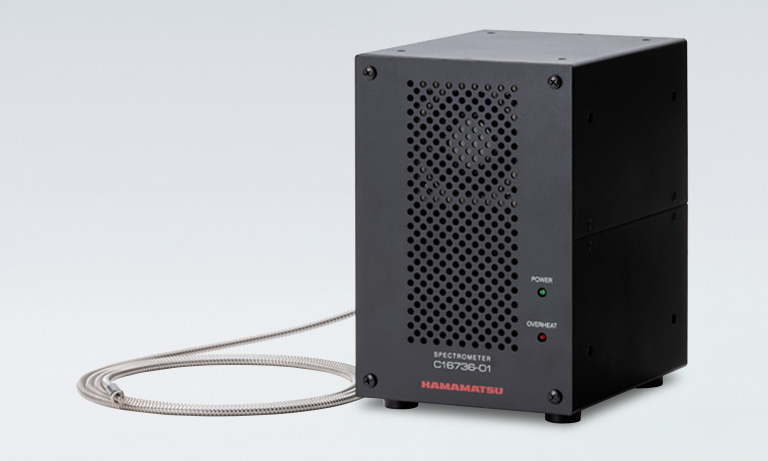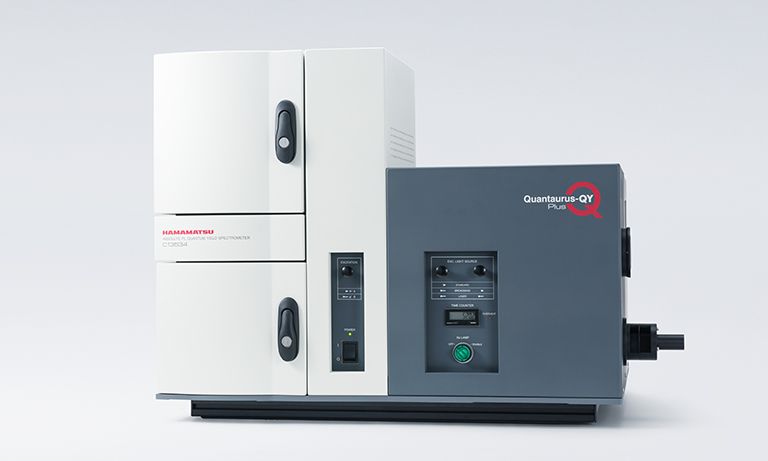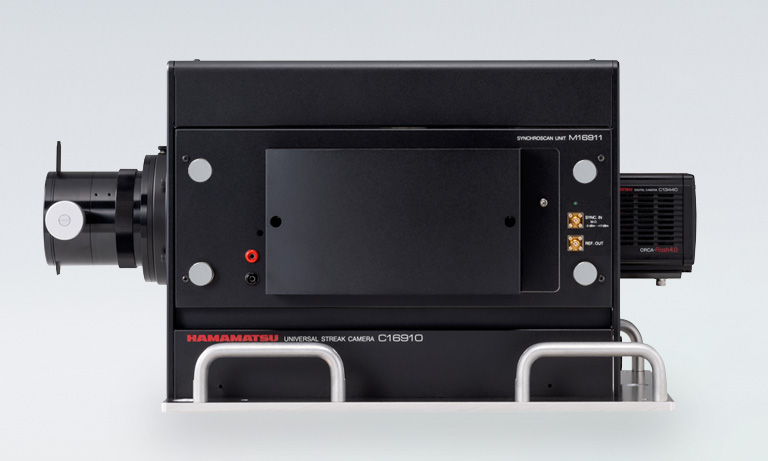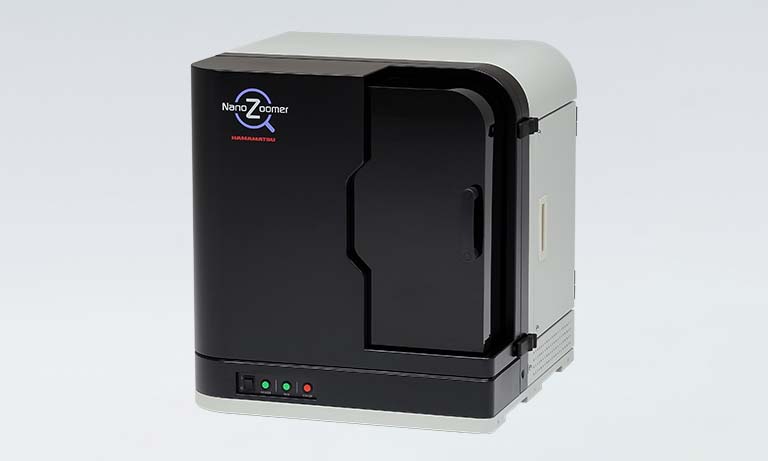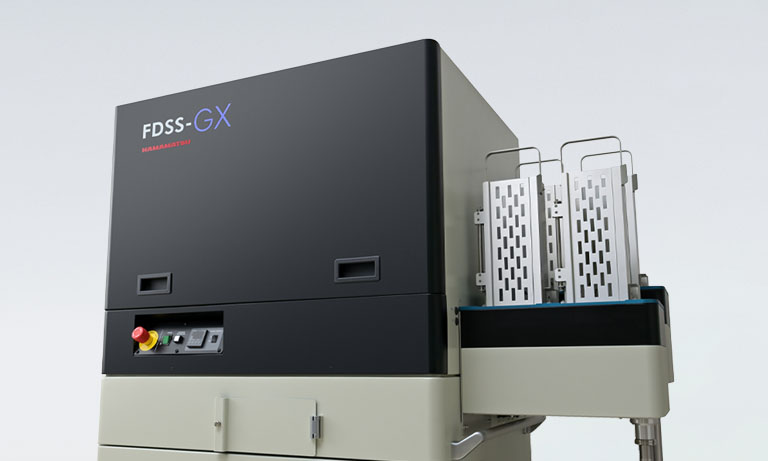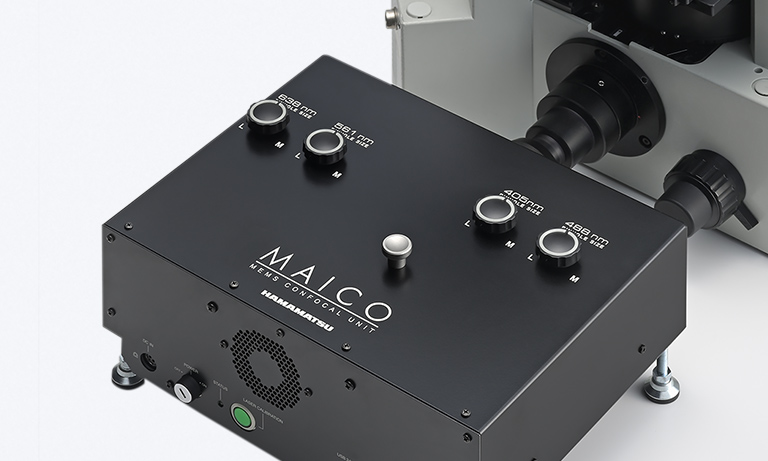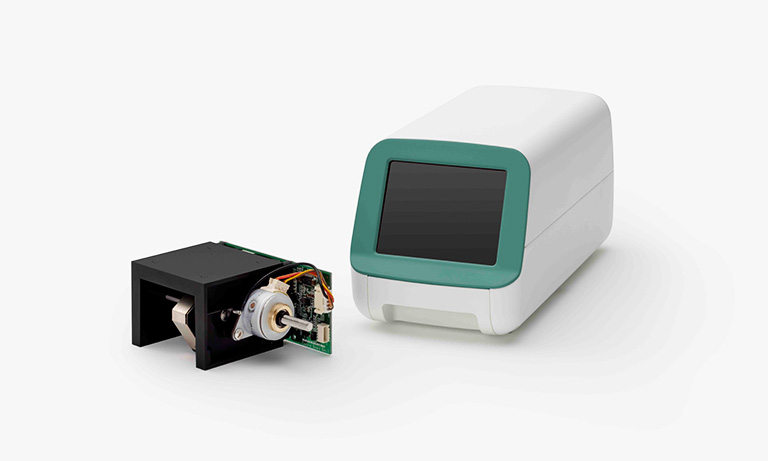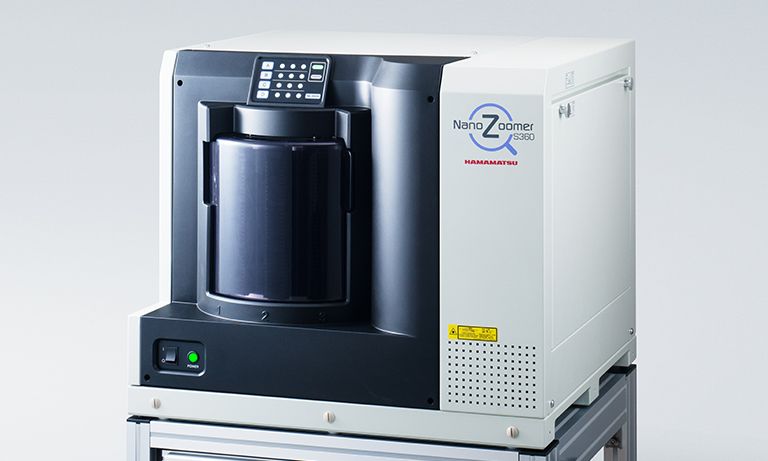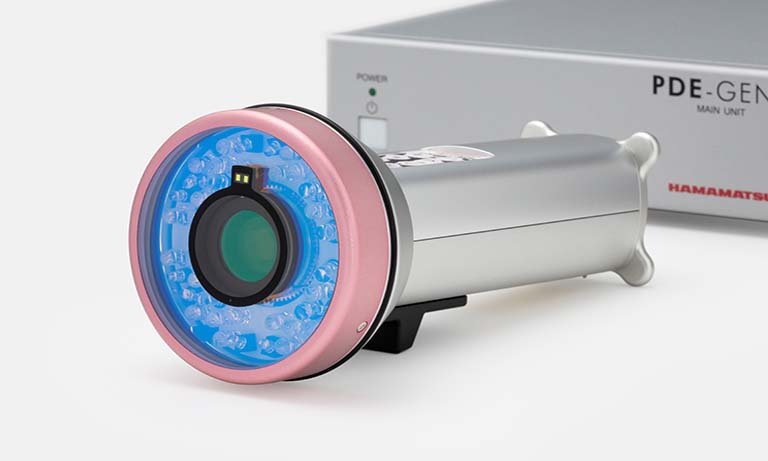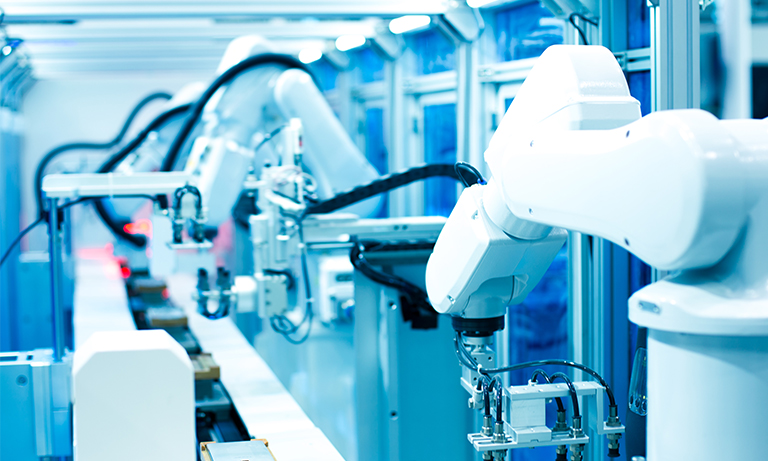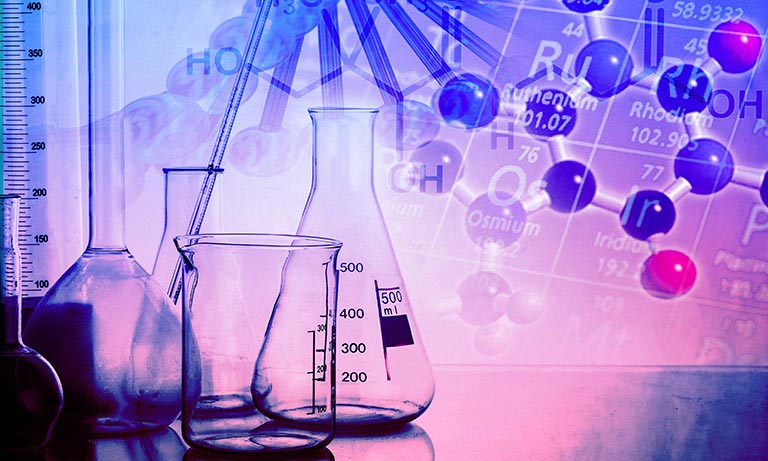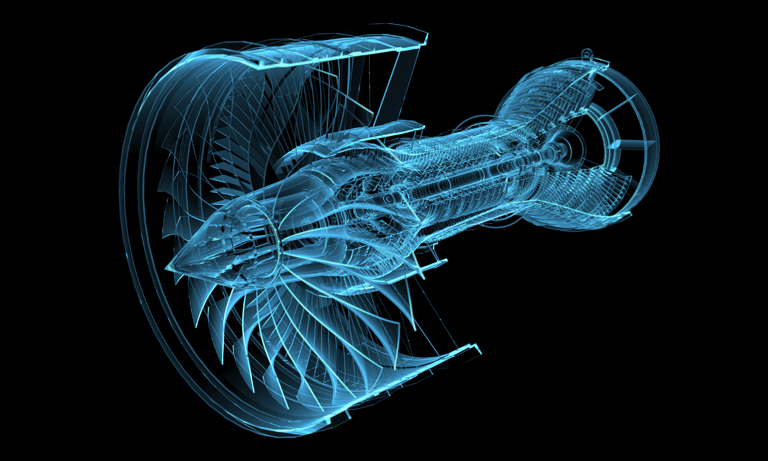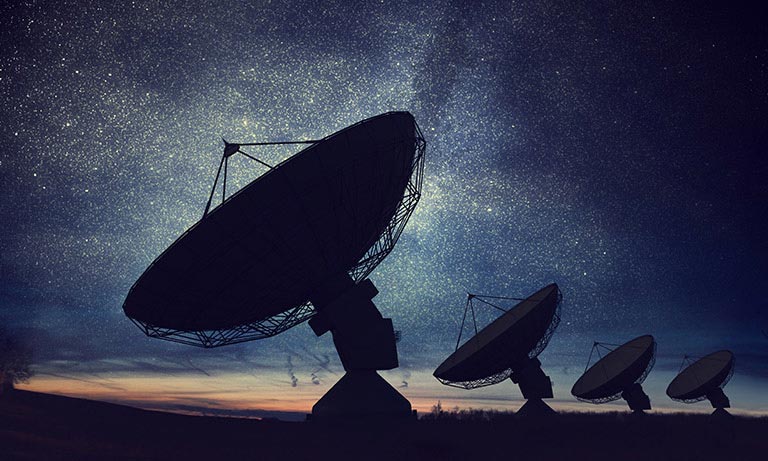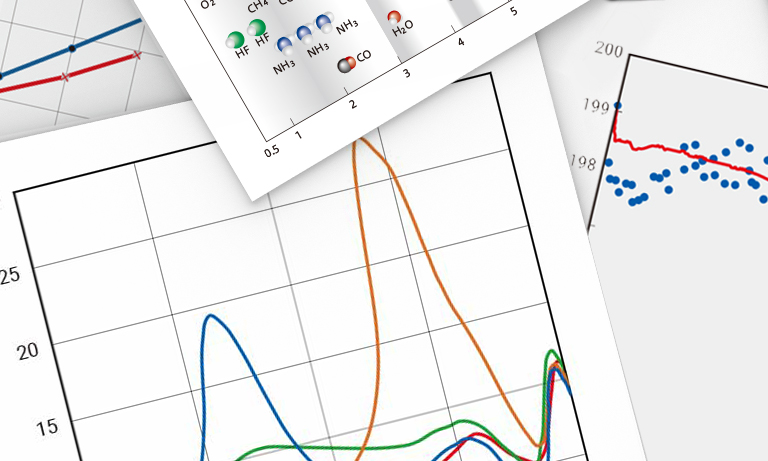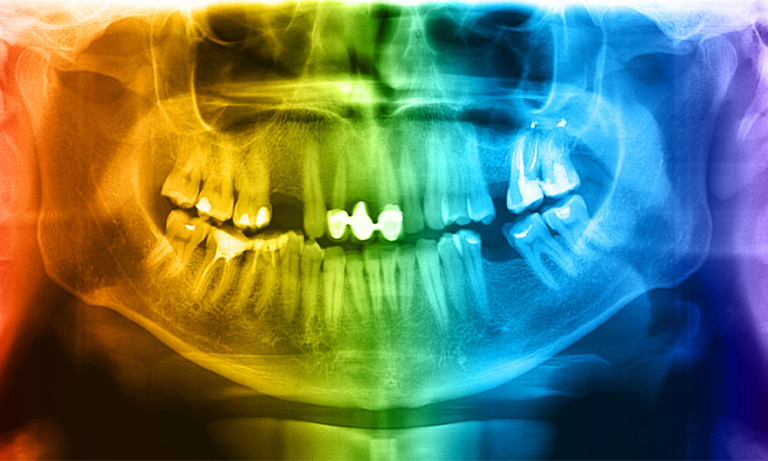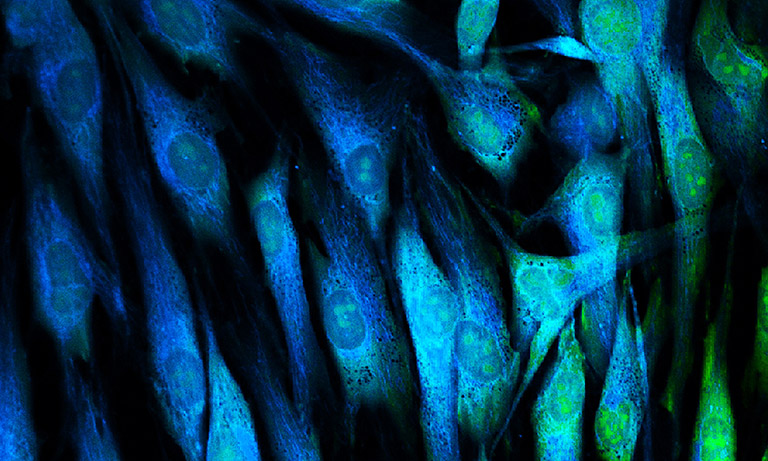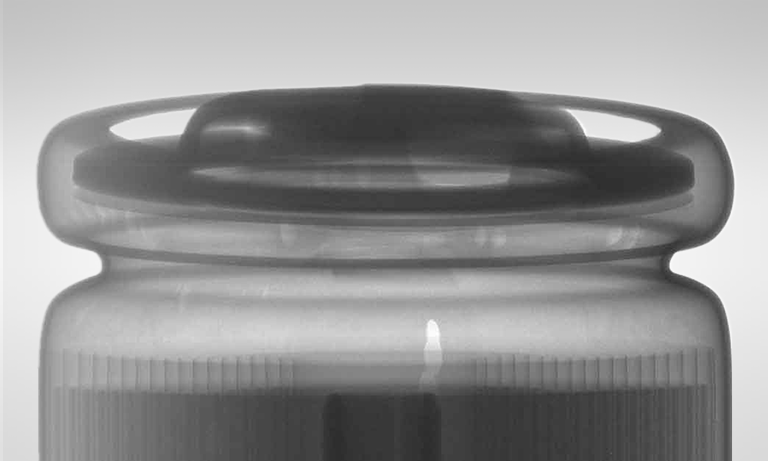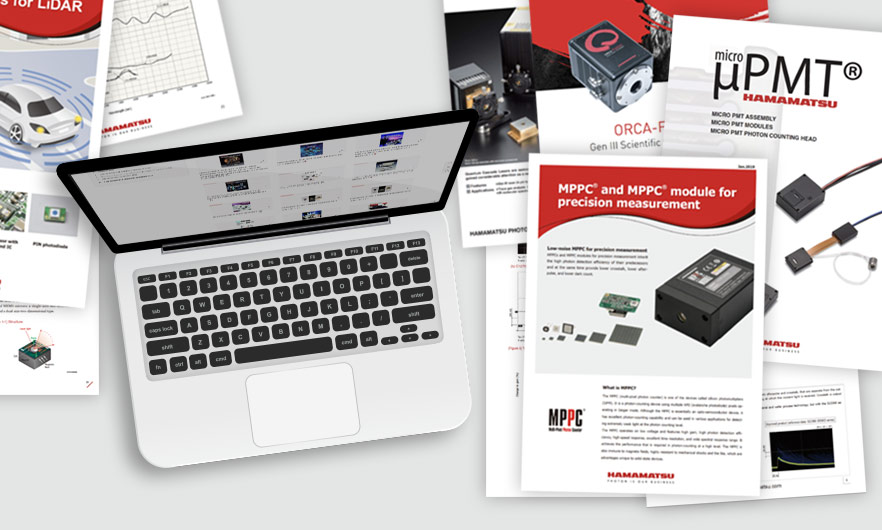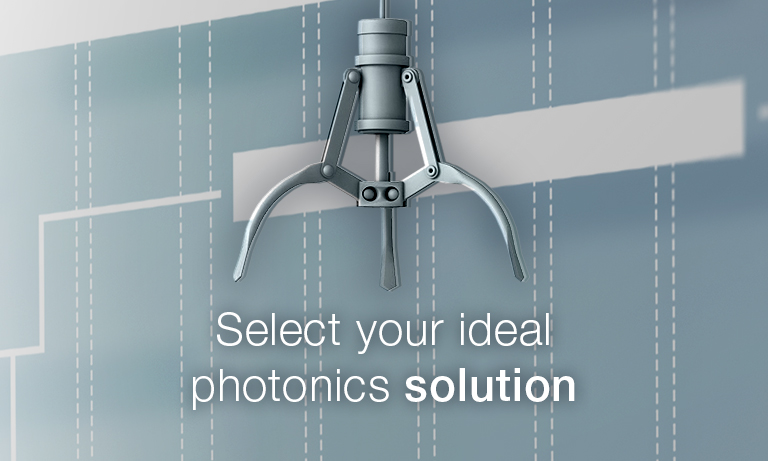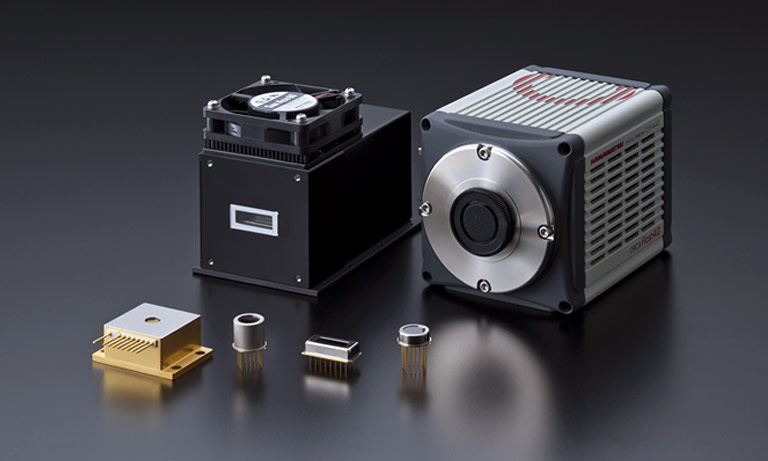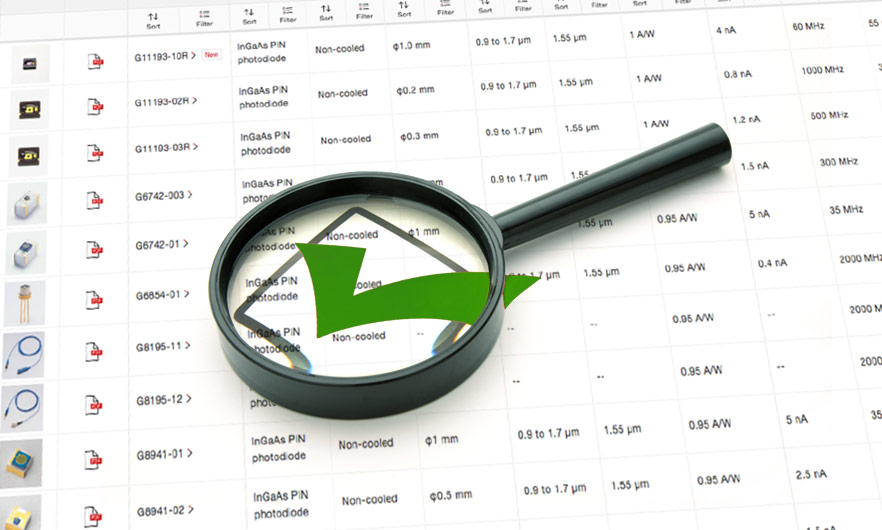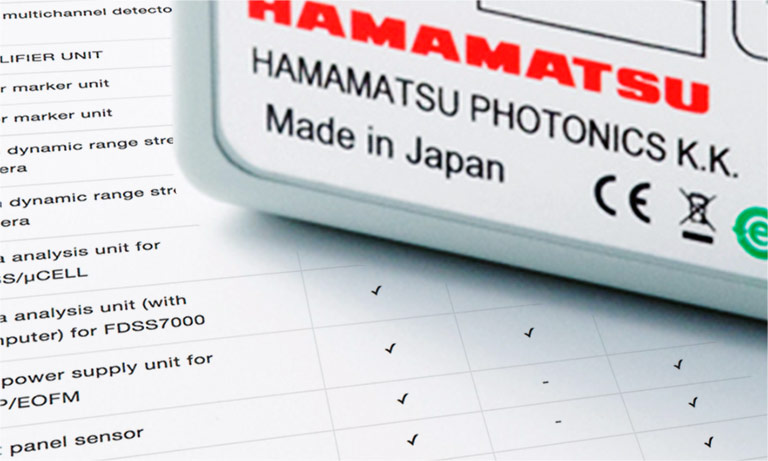United Kingdom (JA)
国・地域を選択してください。
Exploring neutrinos
From Kamiokande and Super-Kamiokande to the Hyper-Kamiokande Exploring neutrinos and proton decay
On February 23, 1987, Kamiokande made the colossal achievement of history's first neutrino observation from a supernova explosion. This once-in-a-lifetime chance, triggered by a supernova 160,000 light-years away, was captured by Hamamatsu Photonics' PMTs. Our technology is always evolving, and it is being passed on, first to the current upgraded Super-Kamiokande, next to the Hyper-Kamiokande.
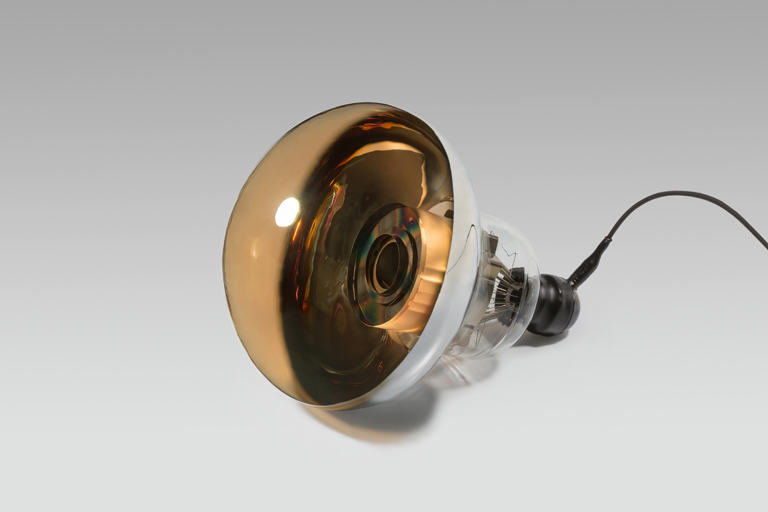
New 20-inch sensor for Hyper-Kamiokande
Keyman Interview
What is a neutrino?
The smallest particles that make up matter are called elementary particles. As far as is currently known, the elementary particles include six quarks, which make up protons and neutrons, and six leptons, which include electrons.
Three of the leptons have no charge and are called neutrinos. Neutrinos are the second-most common thing to fly around space after light. They arise from nuclear fusion reactions at the centers of stars like our sun, from supernovas explosion at the deaths of the heavy stars, from Earth's atmosphere as it is bombarded with cosmic rays, from nuclear reactors and Earth's interior. They can go through any type of matter. At this very moment, they are pouring through our bodies.
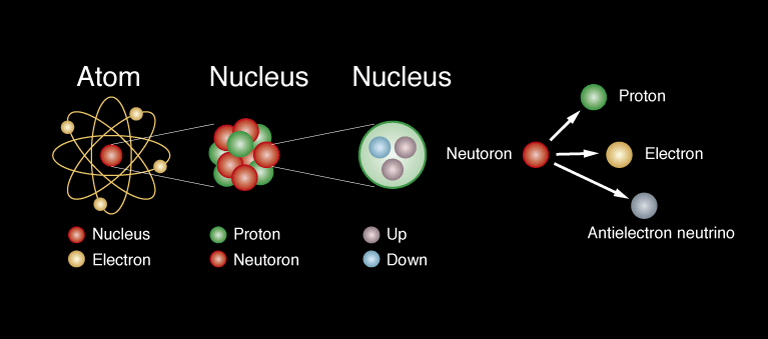
The atom and elementary particles
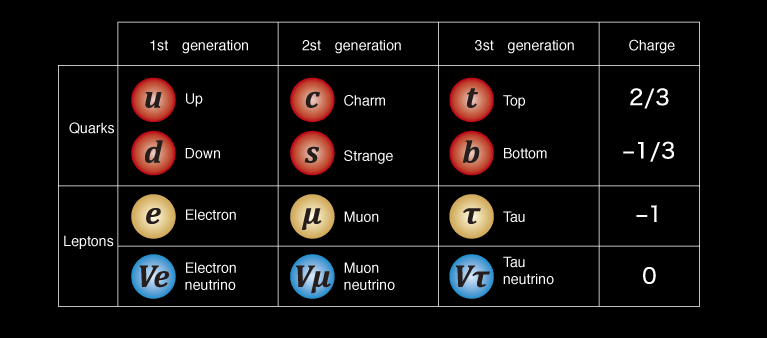
Quarks and leptons
Detecting 11 neutrinos in 13 seconds
In the space of about 13 seconds starting 07:35:35, Feb 23, 1987 (UTC), Kamiokande detected 11 out of the 1058 neutrinos released by a supernova explosion in the Large Magellanic Cloud. These neutrinos were released in a supernova explosion 160,000 years before. Their probability of going through the earth was:
$$\frac{13\ sec.}{5\cdot10^{12}sec.}=2.6\cdot\ 10^{-12}=\frac{2.6}{1\ trillion}$$
Such a remote chance was seized by Kamiokande. Masatoshi Koshiba, Professor of the University of Tokyo, who planned out Kamiokande and directed the experiment, was awarded the Nobel Prize in Physics in 2002 for his accomplishment in observing cosmic neutrinos.
![底部から魚眼レンズで撮影した、カミオカンデ検出器 [画像提供:東京大学宇宙線研究所 神岡宇宙素粒子研究施設]](/eu/en/why-hamamatsu/exploring-neutrinos/_jcr_content/root/container/container_copy_copy__508177300/container_785708653/image_copy.coreimg.jpeg/1642741293832/%E3%83%8B%E3%83%A5%E3%83%BC%E3%83%88%E3%83%AA%E3%83%8E4-768.jpeg)
Kamiokande detector, photographed with a fisheye lens from the bottom
(Image courtesy of the Kamioka Observatory, Institute for Cosmic Ray Research, University of Tokyo)
Mass of ultrapure water filling the tank at Super-Kamiokande: 50,000 tons
![スーパーカミオカンデ概念図[画像提供:東京大学宇宙線研究所 神岡宇宙素粒子研究施設]](/eu/en/why-hamamatsu/exploring-neutrinos/_jcr_content/root/container/image_copy.coreimg.png/1642741293857/%E3%83%8B%E3%83%A5%E3%83%BC%E3%83%88%E3%83%AA%E3%83%8E5-768%2C0.png)
Super-Kamiokande conceptual diagram
(image courtesy of the Kamioka Observatory, Institute for Cosmic Ray Research, University of Tokyo)
Super-Kamiokande, a project to upgrade the abilities of Kamiokande by 20 times, was built 1000 m underground in the Kamioka mine about 300 m from Kamiokande. Its giant tank, 39.3 m in diameter and 41.4 m in height, holds 50,000 tons of water, about 16 times the capacity of Kamiokande. The goals of the experiment are to clarify everything about neutrinos, by observing solar neutrinos, atmospheric neutrinos, artificial neutrinos, etc., and to illuminate the lifespan of protons.
Number of 20-inch-diameter PMTs at Super-Kamiokande: 11,200
In Super-Kamiokande's water tank, facing inside, there are about 11,200 photosensors called photomultiplier tubes (PMTs). These sensors capture the Cherenkov light emitted by charged particles in the water. From the amount of Cherenkov light and the time light is captured, the energy, direction, etc. of charged particles are determined. The photomultiplier tube used has a photoelectric surface of approximately 50 cm (20 inches) in diameter, the largest in the world.
Related content:
Development of 20-inch PMT
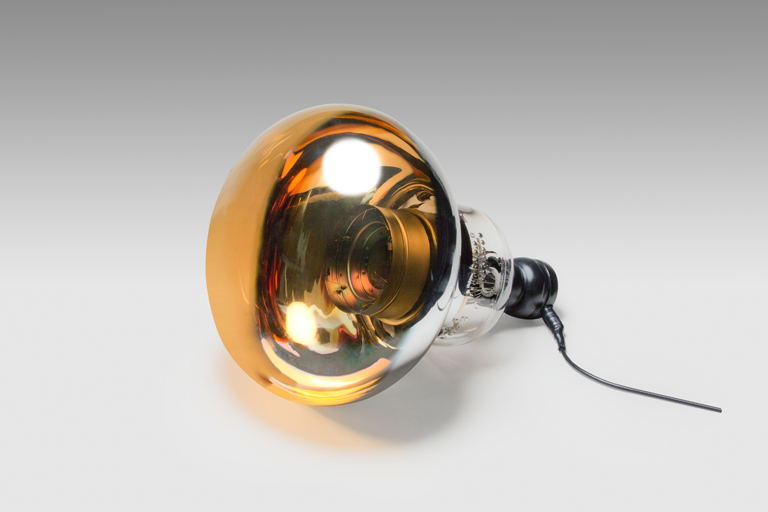
20-inch-diameter PMT
Capacity of the water Cherenkov detector tank at Hyper-Kamiokande: 260,000 tons

Illustration of Hyper-Kamiokande detector

Scematic image of Hyper-Kamiokande detector
It is the aim of Hyper-Kamiokande to elucidate the Grand Unified Theory and the history of the evolution of the Universe through an investigation of proton decay and CP violation (the difference between neutrinos and antineutrinos), together with the observation of neutrinos from supernova explosions. The huge tank of Hyper-Kamiokande will be used in order to obtain an amount of data corresponding to 100 years of data collection time using Super-Kamiokande, in only 10 years. Therefore, this allows the observation of previously unrevealed rare phenomena and small CP violations.
© Hyper-Kamiokande Collaboration
Photosensors in water Cherenkov detectors
Each photosensor in a water Cherenkov detector measures “when” and “how much” light hits the sensor. The capability of a water Cherenkov detector depends largely on the performance of its photosensors. For example, by using photosensors that measure the arrival time of light more precisely, one can estimate the point of neutrino interactions or proton decays in the detector with greater precision. An improvement in the timing performance of photosensors would also provide a better discrimination between signal events and the fake events referred to as backgrounds. Through the use of photosensors that measure the amount of light more precisely, one can estimate the energy of an elementary particle produced by neutrino interactions. For Hyper-Kamiokande, a new 20-inch photomultiplier tube with higher performance for Super-Kamiokande was developed.
© Hyper-Kamiokande Collaboration

New 20-inch-diameter PMT for Hyper-Kamiokande
- Confirmation
-
It looks like you're in the . If this is not your location, please select the correct region or country below.
You're headed to Hamamatsu Photonics website for GB (Japanese). If you want to view an other country's site, the optimized information will be provided by selecting options below.
In order to use this website comfortably, we use cookies. For cookie details please see our cookie policy.
- Cookie Policy
-
This website or its third-party tools use cookies, which are necessary to its functioning and required to achieve the purposes illustrated in this cookie policy. By closing the cookie warning banner, scrolling the page, clicking a link or continuing to browse otherwise, you agree to the use of cookies.
Hamamatsu uses cookies in order to enhance your experience on our website and ensure that our website functions.
You can visit this page at any time to learn more about cookies, get the most up to date information on how we use cookies and manage your cookie settings. We will not use cookies for any purpose other than the ones stated, but please note that we reserve the right to update our cookies.
1. What are cookies?
For modern websites to work according to visitor’s expectations, they need to collect certain basic information about visitors. To do this, a site will create small text files which are placed on visitor’s devices (computer or mobile) - these files are known as cookies when you access a website. Cookies are used in order to make websites function and work efficiently. Cookies are uniquely assigned to each visitor and can only be read by a web server in the domain that issued the cookie to the visitor. Cookies cannot be used to run programs or deliver viruses to a visitor’s device.
Cookies do various jobs which make the visitor’s experience of the internet much smoother and more interactive. For instance, cookies are used to remember the visitor’s preferences on sites they visit often, to remember language preference and to help navigate between pages more efficiently. Much, though not all, of the data collected is anonymous, though some of it is designed to detect browsing patterns and approximate geographical location to improve the visitor experience.
Certain type of cookies may require the data subject’s consent before storing them on the computer.
2. What are the different types of cookies?
This website uses two types of cookies:
- First party cookies. For our website, the first party cookies are controlled and maintained by Hamamatsu. No other parties have access to these cookies.
- Third party cookies. These cookies are implemented by organizations outside Hamamatsu. We do not have access to the data in these cookies, but we use these cookies to improve the overall website experience.
3. How do we use cookies?
This website uses cookies for following purposes:
- Certain cookies are necessary for our website to function. These are strictly necessary cookies and are required to enable website access, support navigation or provide relevant content. These cookies direct you to the correct region or country, and support security and ecommerce. Strictly necessary cookies also enforce your privacy preferences. Without these strictly necessary cookies, much of our website will not function.
- Analytics cookies are used to track website usage. This data enables us to improve our website usability, performance and website administration. In our analytics cookies, we do not store any personal identifying information.
- Functionality cookies. These are used to recognize you when you return to our website. This enables us to personalize our content for you, greet you by name and remember your preferences (for example, your choice of language or region).
- These cookies record your visit to our website, the pages you have visited and the links you have followed. We will use this information to make our website and the advertising displayed on it more relevant to your interests. We may also share this information with third parties for this purpose.
Cookies help us help you. Through the use of cookies, we learn what is important to our visitors and we develop and enhance website content and functionality to support your experience. Much of our website can be accessed if cookies are disabled, however certain website functions may not work. And, we believe your current and future visits will be enhanced if cookies are enabled.
4. Which cookies do we use?
There are two ways to manage cookie preferences.
- You can set your cookie preferences on your device or in your browser.
- You can set your cookie preferences at the website level.
If you don’t want to receive cookies, you can modify your browser so that it notifies you when cookies are sent to it or you can refuse cookies altogether. You can also delete cookies that have already been set.
If you wish to restrict or block web browser cookies which are set on your device then you can do this through your browser settings; the Help function within your browser should tell you how. Alternatively, you may wish to visit www.aboutcookies.org, which contains comprehensive information on how to do this on a wide variety of desktop browsers.
5. What are Internet tags and how do we use them with cookies?
Occasionally, we may use internet tags (also known as action tags, single-pixel GIFs, clear GIFs, invisible GIFs and 1-by-1 GIFs) at this site and may deploy these tags/cookies through a third-party advertising partner or a web analytical service partner which may be located and store the respective information (including your IP-address) in a foreign country. These tags/cookies are placed on both online advertisements that bring users to this site and on different pages of this site. We use this technology to measure the visitors' responses to our sites and the effectiveness of our advertising campaigns (including how many times a page is opened and which information is consulted) as well as to evaluate your use of this website. The third-party partner or the web analytical service partner may be able to collect data about visitors to our and other sites because of these internet tags/cookies, may compose reports regarding the website’s activity for us and may provide further services which are related to the use of the website and the internet. They may provide such information to other parties if there is a legal requirement that they do so, or if they hire the other parties to process information on their behalf.
If you would like more information about web tags and cookies associated with on-line advertising or to opt-out of third-party collection of this information, please visit the Network Advertising Initiative website http://www.networkadvertising.org.
6. Analytics and Advertisement Cookies
We use third-party cookies (such as Google Analytics) to track visitors on our website, to get reports about how visitors use the website and to inform, optimize and serve ads based on someone's past visits to our website.
You may opt-out of Google Analytics cookies by the websites provided by Google:
https://tools.google.com/dlpage/gaoptout?hl=en
As provided in this Privacy Policy (Article 5), you can learn more about opt-out cookies by the website provided by Network Advertising Initiative:
http://www.networkadvertising.org
We inform you that in such case you will not be able to wholly use all functions of our website.
Close
